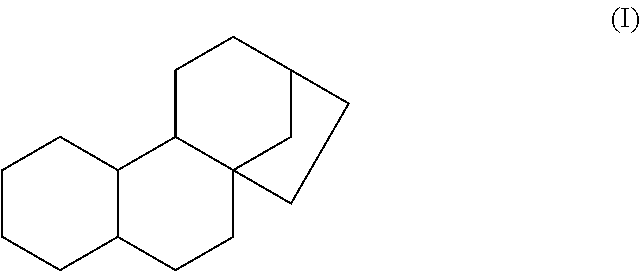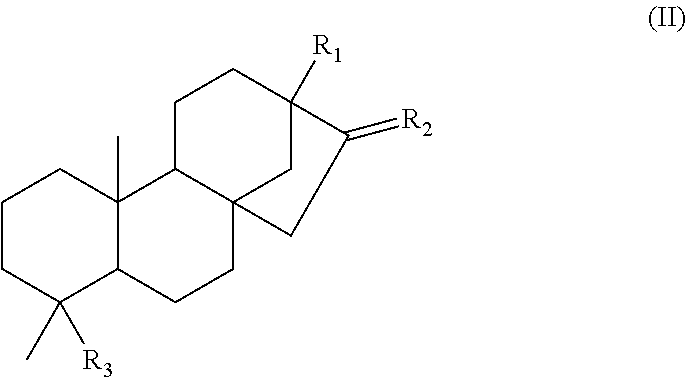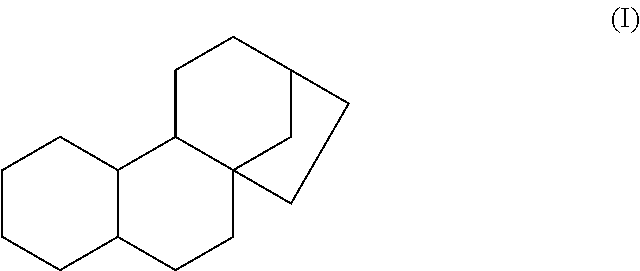Treatment of cognitive impairment
a cognitive impairment and treatment technology, applied in the field of compounds, can solve problems such as memory difficulty, cognitive impairment, and inability to achieve normal independent function, and achieve the effect of reducing the risk of cognitive impairmen
- Summary
- Abstract
- Description
- Claims
- Application Information
AI Technical Summary
Benefits of technology
Problems solved by technology
Method used
Image
Examples
examples
Examination of the Effect of Isosteviol on Cognitive Function in Elderly Patients with Alzheimer's Disease
[0108]Healthy volunteers and a subject groups comprising elderly patients with Alzheimers disease and / or mild cognitive impairment receive relevant dosages of a Isosteviol as described herein as a single dose. The blood levels of isosteviol is monitored and the volunteers / patients are tested for changes in cognitive function with a variety of psychometric tests which include the tests mentioned in “A Neuropsycological Test Battery for use in Alzheimer Disease Clinical Trials”, ARCH NEUROL, September 2007, vol. 64, no. 9, pp. 1323-1329. Then the effect is evaluated. The volunteers / patients are also subjected to a quantitative assessment of the changes produced in the awake electroencephalogram (EEG) particularly expressed in terms of the ratio of the alpha wave power to that of the lower frequency waves (delta and theta).
Determination of Dose-Response
[0109]The abovementioned expe...
PUM
| Property | Measurement | Unit |
|---|---|---|
| weight | aaaaa | aaaaa |
| weight | aaaaa | aaaaa |
| weight | aaaaa | aaaaa |
Abstract
Description
Claims
Application Information
 Login to View More
Login to View More - R&D
- Intellectual Property
- Life Sciences
- Materials
- Tech Scout
- Unparalleled Data Quality
- Higher Quality Content
- 60% Fewer Hallucinations
Browse by: Latest US Patents, China's latest patents, Technical Efficacy Thesaurus, Application Domain, Technology Topic, Popular Technical Reports.
© 2025 PatSnap. All rights reserved.Legal|Privacy policy|Modern Slavery Act Transparency Statement|Sitemap|About US| Contact US: help@patsnap.com



